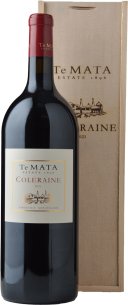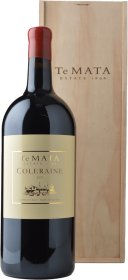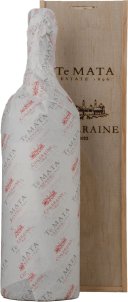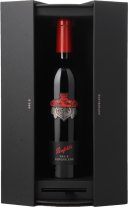Te Mata Estate Coleraine Cabernet Sauvignon Merlot Cabernet Franc
TE MATA ESTATE Coleraine. Cepage may include Cabernet Sauvignon, Merlot, and Cabernet Franc. Hawkes Bay, New Zealand
Vinedo Chadwick Cabernet
Chateau Figeac 1er grand cru classe (B)
While a fair share of Bordeaux vineyards can claim significant historical pedigree, few would be able to touch Chateau Figeac - it is one of a select few St Emilion vineyards to have been continuously occupied for over 2,000 years! The estate dates back to the second century when even the ancient Romans who occupied the area were aware of its outstanding terroir. One figure dominates the Chateau’s modern era, and that is Thierry Manoncourt who ran the property from 1947 until his death in 2010, just shy of his 93rd birthday. Under his leadership, the Chateau was the first major Right Bank estate to embrace modern techniques such as temperature controlled, stainless steel vats. The traditional-styled Bordeaux has, understandably, gone through a wide range of iterations in its 2,000-plus year history - yet it still manages to surprise and delight. The 2016 earned rave reviews from critics, with Jancis Robinson hailing it as a wine of which “...the Manoncourt family should be very proud.”
Chateau Haut-Brion
Te Mata Estate Coleraine Cabernet Merlot
Te Matas Hawkes Bay estate is a prestigious winery with a rich history, producing some of New Zealands most celebrated wines. If the Langtons Classification crossed the Tasman, Te Mata Coleraine would sit alongside Grange at its very pinnacle. Established, esteemed, outstanding vintage after vintage, the glowing adjectives come thick and fast.
Chateau La Mission-Haut-Brion Graves
Château la Mission Haut-Brion is on uniquely stony soil in the Pessac-Léognan appellation close to the city of Bordeaux. It is a Cru Classé in the Graves Classification of 1953. The 22.5 hectare red wine vineyard is planted to Cabernet Sauvignon (46%), Merlot (44%) and Cabernet Franc (10%). The chateau wine is vinified in large (180hl) temperature-controlled, stainless steel vats and aged in 100% new French oak for an average of 22 months.
Penfolds Superblend 802.B Cabernet Shiraz
PENFOLDS Superblend 802.B Cabernet Shiraz, South Australia 2018 Australias most lauded winery has amalgamated their classic varietals for the coveted 2018 blend, sourcing fruit from Barossa Valley, McLaren Vale, Coonawarra, Wrattonbully, Robe and Clare Valley. An impressive example of Cabernet Shiraz, the 802.B reflects the revered red labels curiosity, innovation and vision for producing elevated Australian wines. Time and time again. A blend of 55% Cabernet Sauvignon and 45% Shiraz blended after fermentation, then matured for 19 months in French oak hogsheads. The 2018 displays complex aromas of dark spiced fruit, graphite, soy, and chocolate with a hint of cedary oak. The palate is layered and sleek with pure and intense fruit flavours, and tannins that are mineral and fine. Medium to full-bodied, silky and delicate, with a long, lingering finish, the 802.B is a true collector's dream.
Chateau Pavie 1er grand cru, St-Emilion
Dating back to Roman times, and being one of only four Saint-Émilion producers elevated to the status of Premier Grand Cru Classé, it would seem Chateau Pavie has rather a lot to live up to - and by all accounts, they are holding up their end of the bargain with this years vintage. Retaining the glamour and panache of recent years, the 2016 has been thrilling and charming critics thus far, with many praising its superior balance and restraint. It is expected to cellar spectacularly, suggesting further delights yet to be discovered.
Chateau Palmer 3Me Cru Classe, Margaux
Regarded a Super Second (but technically a 3me growth), Palmer is capable of producing wines that equal or even outstrip the quality of its famous Premier cru neighbour, Ch. Margaux. The estate also makes a separate second label - named Alter Ego - which is made from similarly high-quality fruit but treated differently in the winery with the aim of producing a counterpoint in style to the First wine.
Chateau Chateau La Mission HautBrion
Château la Mission Haut-Brion is on uniquely stony soil in the Pessac-Léognan appellation close to the city of Bordeaux. It is a Cru Classé in the Graves Classification of 1953. The 22.5 hectare red wine vineyard is planted to Cabernet Sauvignon (46%), Merlot (44%) and Cabernet Franc (10%). The chateau wine is vinified in large (180hl) temperature-controlled, stainless steel vats and aged in 100% new French oak for an average of 22 months.























